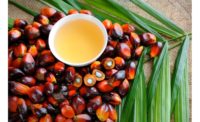Company: Conagen
Website: https://conagen.com/
Ingredient Snapshot: Scalable, sustainable capsaicin ingredients for its use in food, consumer and industrial products have now become more accessible. Conagen announced it has successfully scaled-up its fermentation process for the production of premium capsaicin and its related capsaicinoid molecules.
Chili peppers are widely used as a food additive in spicy and hot cuisines, due to its hot and pungent characteristics. Consumers globally are demanding more clean, natural and exciting flavors, especially hot and spicy flavors.
Yet, the challenge in meeting this demand is that capsaicin from chili peppers is difficult to use because of its hot properties, proposing challenges to manufacturers. Capsaicin extraction is limited by the availability of chili peppers, which is subject to fluctuations in price and quality.
The market for capsaicin is growing because of its pungent characteristic, which is very versatile in a broad spectrum of applications, including food, cosmetic, personal care, pharmaceutical and medical. In industrial applications, such as anti-fouling paint for boats and ships, capsaicin has the potential to replace heavy metals.
“The successful scale-up of our fermentation process for capsaicinoids is a good example of Conagen’s innovative advancements in gene discovery, strain engineering and process development and optimization,” said Dr. Casey Lippmeier, vice president of Innovation at Conagen. “The complimentary addition of capsaicinoids to our product portfolio enhances our motivation to meet consumers’ demand for sustainable, nature-based, and clean ingredients.”
Two major capsaicinoids, capsaicin and dihydrocapsaicin are responsible for roughly up to 90 percent of the pungency in chili pepper.
Yet, another capsaicinoid, nonivamide, also known as Pelargonic Acid Vanillylamide, (PAVA) is found in small, trace amounts in hot peppers. It is an alternative to capsaicin for its hot sensation and spicy flavoring. Nonivamide is typically used in topical muscle pain relievers and synthetic pepper spray, respectfully.
Due to the extremely low content of nonivamide in hot peppers, and the large demand, current plant extraction methods are not commercially viable. Thus, nonivamide has exclusively been made by chemical synthesis. Although chemically synthesized nonivamide is readily available, consumers are adopting clean and natural products.
Providing a solution to global capsaicin shortages, Conagen has identified several key genes in the capsaicin biosynthetic pathway in hot peppers and has demonstrated proof-of-concepts for the production of capsaicin, dihydrocapsaicin, and nonivamide. Several patents have been granted to Conagen for microbial production of capsaicinoids.
As a result of the demand for a natural, low cost-in-use solution, Conagen has successfully optimized and scaled-up its fermentation process for the production of capsaicin, dihydrocapsaicin, and nonivamide.









